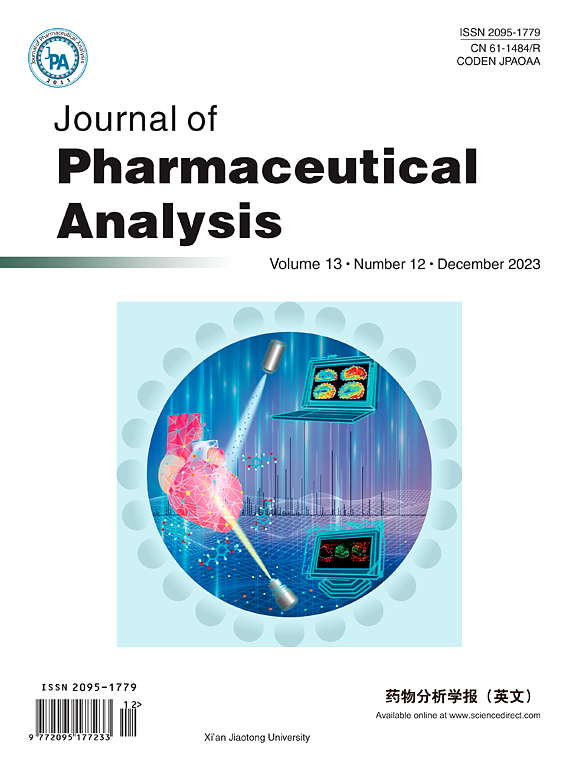Hepatic protein phosphatase 1 regulatory subunit 3G alleviates obesity and liver steatosis by regulating the gut microbiota and bile acid metabolism
IF 8.9
1区 医学
Q1 PHARMACOLOGY & PHARMACY
引用次数: 0
Abstract
Intestinal dysbiosis and disrupted bile acid (BA) homeostasis are associated with obesity, but the precise mechanisms remain insufficiently explored. Hepatic protein phosphatase 1 regulatory subunit 3G (PPP1R3G) plays a pivotal role in regulating glycolipid metabolism; nevertheless, its obesity-combatting potency remains unclear. In this study, a substantial reduction was observed in serum PPP1R3G levels in high-body mass index (BMI) and high-fat diet (HFD)-exposed mice, establishing a positive correlation between PPP1R3G and non-12α-hydroxylated (non-12-OH) BA content. Additionally, hepatocyte-specific overexpression of (PPP1R3G HOE) mitigated HFD-induced obesity as evidenced by reduced weight, fat mass, and an improved serum lipid profile; hepatic steatosis alleviation was confirmed by normalized liver enzymes and histology. PPP1R3G HOE considerably impacted systemic BA homeostasis, which notably increased the non-12-OH BAs ratio, particularly lithocholic acid (LCA). 16S ribosomal DNA (16S rDNA) sequencing assay indicated that PPP1R3G HOE reversed HFD-induced gut dysbiosis by reducing the / ratio and population, and elevating the relative abundance of , which exhibited a positive correlation with serum LCA levels. A fecal microbiome transplantation test confirmed that the anti-obesity effect of hepatic PPP1R3G was gut microbiota-dependent. Mechanistically, PPP1R3G HOE markedly suppressed hepatic cholesterol 7α-hydroxylase (CYP7A1) and sterol-12α-hydroxylase (CYP8B1), and concurrently upregulated oxysterol 7-α hydroxylase and Takeda G protein-coupled BA receptor 5 (TGR5) expression under HFD conditions. Furthermore, LCA administration significantly mitigated the HFD-induced obesity phenotype and elevated non-12-OH BA levels. These findings emphasize the significance of hepatic PPP1R3G in ameliorating diet-induced adiposity and hepatic steatosis through the gut microbiota-BA axis, which may serve as potential therapeutic targets for obesity-related disorders.肝蛋白磷酸酶 1 调节亚基 3G 通过调节肠道微生物群和胆汁酸代谢缓解肥胖和肝脂肪变性
肠道菌群失调和胆汁酸(BA)平衡紊乱与肥胖有关,但其确切机制仍未得到充分探讨。肝脏蛋白磷酸酶 1 调节亚基 3G(PPP1R3G)在调节糖脂代谢中起着关键作用,但其对抗肥胖的功效仍不清楚。在这项研究中,观察到高体重指数(BMI)和高脂饮食(HFD)暴露小鼠血清中的 PPP1R3G 水平大幅降低,从而确立了 PPP1R3G 与非 12α- 羟基化(non-12-OH)BA 含量之间的正相关性。此外,肝细胞特异性过表达(PPP1R3G HOE)可减轻 HFD 诱导的肥胖,表现为体重和脂肪量减少,血清脂质状况改善;肝脏酶和组织学正常化证实肝脏脂肪变性减轻。PPP1R3G HOE极大地影响了全身BA的平衡,显著增加了非12-OH BAs的比例,尤其是石胆酸(LCA)。16S 核糖体 DNA(16S rDNA)测序分析表明,PPP1R3G HOE 通过降低非 12-OH-BAs的比例和种群数量,提高非 12-OH-BAs的相对丰度,逆转了 HFD 引起的肠道菌群失调,而非 12-OH-BAs的比例和种群数量与血清 LCA 水平呈正相关。粪便微生物组移植试验证实,肝脏 PPP1R3G 的抗肥胖作用是肠道微生物群依赖性的。从机理上讲,PPP1R3G HOE能显著抑制肝脏胆固醇7α-羟化酶(CYP7A1)和甾醇-12α-羟化酶(CYP8B1),并同时上调氧甾醇7-α羟化酶和武田G蛋白偶联BA受体5(TGR5)的表达。此外,服用 LCA 能明显减轻 HFD 诱导的肥胖表型和非 12-OH BA 水平的升高。这些发现强调了肝脏 PPP1R3G 在通过肠道微生物群-BA 轴改善饮食诱导的肥胖和肝脏脂肪变性中的重要作用,它可能成为肥胖相关疾病的潜在治疗靶点。
本文章由计算机程序翻译,如有差异,请以英文原文为准。
求助全文
约1分钟内获得全文
求助全文
来源期刊

Journal of Pharmaceutical Analysis
Chemistry-Electrochemistry
CiteScore
16.20
自引率
2.30%
发文量
674
审稿时长
22 weeks
期刊介绍:
The Journal of Pharmaceutical Analysis (JPA), established in 2011, serves as the official publication of Xi'an Jiaotong University.
JPA is a monthly, peer-reviewed, open-access journal dedicated to disseminating noteworthy original research articles, review papers, short communications, news, research highlights, and editorials in the realm of Pharmacy Analysis. Encompassing a wide spectrum of topics, including Pharmaceutical Analysis, Analytical Techniques and Methods, Pharmacology, Metabolism, Drug Delivery, Cellular Imaging & Analysis, Natural Products, and Biosensing, JPA provides a comprehensive platform for scholarly discourse and innovation in the field.
 求助内容:
求助内容: 应助结果提醒方式:
应助结果提醒方式:


